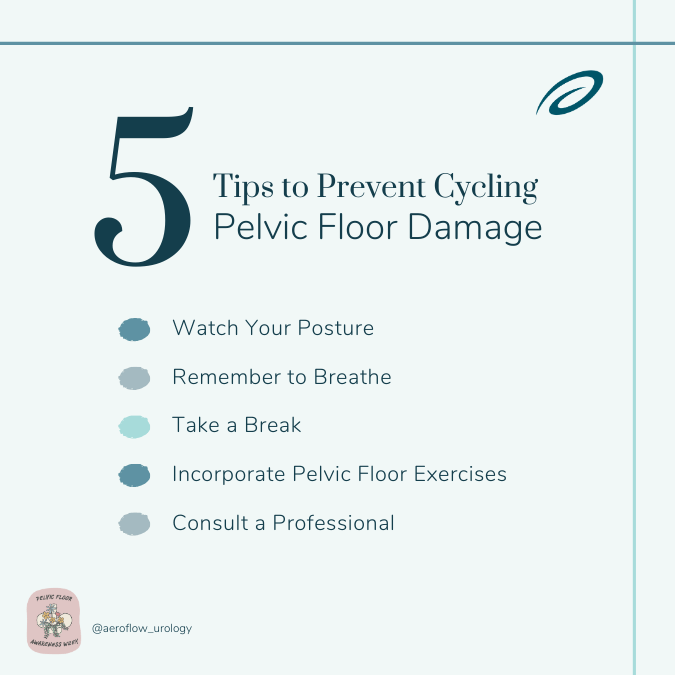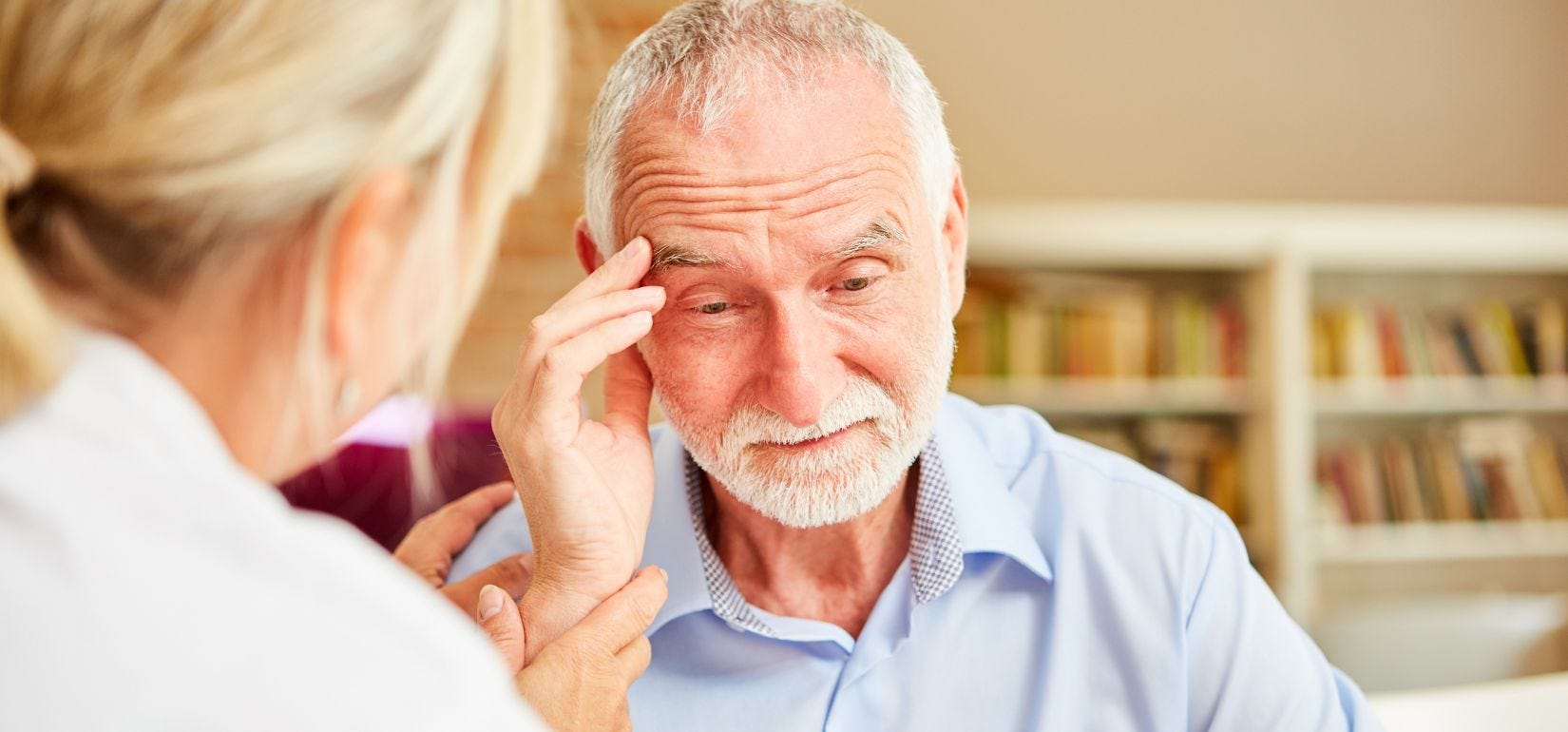Popular exercise bikes have helped people burn calories and cycle indoors during the Covid-19 pandemic.
They can also help you improve cardiovascular health, lose weight, and lower your risk of Type 2 diabetes, but did you know that cycling for too long may compromise your pelvic floor?
Before you buy a bike and begin cycling, read this post. We’ll explain how cycle bikes can cause pelvic floor muscle damage and incontinence and how to help prevent those things from happening.
Table of Contents:
How Can Cycling Hurt Your Pelvic Floor?
Preventing Pelvic Floor Damage While Cycling
The Advantages of Cycling
Check Your Eligibility
2 Easy Steps
Discover the continence care essentials available through your Medicaid plan.
It’s recommended that adults between the ages of 18 and 64 engage in moderate exercises for two and a half hours per week. When it comes to cycling, experts say you should ride for 30 to 45 minutes a day.
Cycling has many advantages when done correctly.
It can help:
- Make your heart and lungs healthier.
- Improve your circulation.
- Burn fat and control your weight.
- Lower resting pulse rate.
- Increase cardiovascular fitness.
- Reduce the risk of cardiovascular disease.
- Improve balance.
- Reduce anxiety and depression.
- Increase muscle strength.
- Lower your risk of Type 2 diabetes.
- Reduce the risk of bowel cancer.


While there are many advantages to cycling indoors and outside, if you cycle for too long, it may end up causing damage to your pelvic floor muscles.
What Is the Pelvic Floor?
The pelvic floor is a group of muscles that controls many of our regular bodily functions, such as urination, defecation, and sexual function.
The pelvic floor muscles attach to the front pubic bone and wrap around the urethra and vagina in females. They wrap all the way around to your rectum and the tailbone. In females, the pelvic floor muscles also fan out to the sides of the sitting bones.
These muscles are critical to keeping the rest of your pelvic organs safely in place. Think of the pelvic floor as a hammock that supports a person (organs) lying in it.
How Does Pelvic Floor Damage Happen?
1 in 4 women in the United States has one or more pelvic floor disorders.
So, how does this happen?
Women usually have weaker pelvic floor muscles than men to begin with. Age and hormonal changes during menopause, pregnancy, and childbirth can all contribute to this loss of support in the pelvic floor muscles.
Other contributing factors include obesity, heavy lifting, cycling / biking, chronic constipation, and even wearing high heels.
Pelvic floor muscle damage typically leads to dysfunction and incontinence in women. When these things happen, they weaken your pelvic floor muscles by putting too much strain on them. When your pelvic floor muscles become weak, they can no longer hold in urine or fecal matter, which may lead to incontinence.
While all of these causes of damage are common among women, they are not normal and can affect your quality of life.
How Can Cycling Hurt Your Pelvic Floor?
People who use cycling bikes four to five times a week for extended periods (longer than the recommended 30 to 45 minutes) have reported pain in their pelvic area.
While riding your bike, the long-term pressure directed to the pelvic floor muscles and nerves can cause trauma to the pelvic structures. This includes increased muscle tightness and shortening, nerve damage, and pelvic / lower back pain.
The sitting position also causes upward force while your abdominals are causing downward force. This accumulates in the pelvis, and your pelvic structure tries to accommodate this pressure change, again leading to muscle tightness and nerve damage.
Other symptoms reported to healthcare professionals include:
- Rectum pain.
- Numbness in the pelvic area.
- Decreased sexual function.
- Different types of incontinence.
- Pelvic organ prolapse.
- Vulva pain.
- General pain in the pelvis.
- Urinary leakage.
- Vaginal pain.


Some of these unfortunate symptoms may dissipate on their own, but others, such as bladder control problems, decreased sexual function, and pelvic pain, may lead to incontinence.
What Types of Incontinence Can You Develop From Cycling?
Urinary incontinence can result from cycling too often and too long. Incontinence is defined as a loss of bladder control, and symptoms can present themselves in different ways.
The main types of incontinence associated with pelvic floor damage are:
Stress incontinence (SI): If you have SI, you leak urine when you sneeze, laugh, lift heavy objects, exercise, or bend over.
Urge incontinence: Urge incontinence has a pretty straightforward symptom: feeling the urge to pee intensely and frequently.
Overactive bladder (OAB): Like urge incontinence, OAB makes you feel like you need to void your bladder more than usual.
Overflow incontinence: If you have overflow incontinence, your bladder overflows because it cannot void completely when you pee, causing leakage.
All types of incontinence can be managed with treatment, either at home or with the help of a healthcare provider.
One of the best ways to manage incontinence is by receiving free incontinence supplies from a provider like Aeroflow Urology! See if you qualify by filling out our short eligibility form.
Preventing Pelvic Floor Damage While Cycling
If you have to use your cycle bike, try using some of these methods to prevent pelvic floor damage. These methods can be used for people who experience incontinence and people who don’t to prevent it from developing.
Give Yourself A Break!
Over-exercising can lead to exhaustion, muscle strains, stress fractures, and just lousy workout technique (in other words, you won’t be working out properly and won’t get the results you wanted). Therefore, it’s advised to take two rest days per week and little breaks between your cycling sessions.
The damage you can cause to your pelvic floor muscles also depends on what your body is like as an individual. It's recommended that you start at 10-minute intervals while biking and increase by 5-minute increments, paying attention to your body's signals. If you notice any pain, tingling, or numbness, stop biking. Also, give your pelvic muscles a break and wait at least 48 hours between rides.
Stop Using Bikes
You'd be surprised at the number of other exercises that can benefit overall body recovery and health that are not stationary bikes. Walking alone can increase cardiovascular health and muscle tone. Pilates is another great core exercise. Kickboxing, martial arts, and yoga can all benefit head-to-toe strength.
Be sure to change up your routine, especially if you find that cycling or bike riding is causing you severe pain, urinary leakage, numbness, pelvic damage, or increasing your incontinence symptoms. Take a break from the bike. You can also try swimming, jogging, or hiking.
Watch Your Posture
Much of the time, pelvic floor damage and other symptoms experienced while cycling is related to your posture. While cycling, it’s normal for riders to want to get close to the bike, hunching forward and tensing up their bodies. But this is bad for your pelvic muscles as it puts downward pressure on the area.
Pay attention to posture by sitting up straight and loosening up. Keep your neck straight and look forward with your eyes on the horizon.
The position of the bike seat can also affect the pressure put on your pelvis. While some people think adjusting the bike seat or adding a cushion will help, it doesn't alleviate the pressure enough to decrease trauma to the pelvis.
Work With A Professional
If you need to cycle but are experiencing symptoms listed above or symptoms of incontinence, talk with a healthcare professional so you can plan out a safe routine yet still meets your exercise needs. Speaking with a physical therapist or pelvic floor therapist may also be helpful.
Remember to Breathe
Holding your breath can put extra pressure on your abdomen and strain your pelvic floor. Breathe deeply while biking and relax your abdomen.
Incorporate Pelvic Floor Exercises
Pelvic floor exercises, also called Kegel exercises, can bring strength back to your pelvic floor muscles. Kegels are advantageous to men, women, people with incontinence, and people without incontinence. These exercises can also help maintain sexual health and function, and continence.
How to Manage Incontinence Caused by Cycling
If you've damaged your pelvic floor muscles and are experiencing incontinence, don't worry. There are different things you can do to manage your incontinence symptoms and still exercise or cycle.
1. See A Pelvic Floor Therapist
It’s recommended that everyone see a pelvic floor therapist before their incontinence symptoms become unmanageable. A physical therapist can also help you if you’ve sustained pelvic floor muscle damage.
2. Use Incontinence Products
If you need to ride your bike for exercise, incontinence products may be helpful to you.
Disposable briefs and bladder pads help absorb leaks and keep you dry. Bonus— these products might even help absorb some down-there sweat!
If you’d like to see if you can get incontinence products for free through your insurance, fill out our qualify form. If approved, you’ll get to shop from a curated list, and we’ll ship your products directly to your home every month.
3. Do Kegel Exercises
If you’ve already damaged your pelvic floor by cycling or biking, pelvic floor exercises may be able to help strengthen them. In addition, pelvic floor exercises are easy to do at home and can significantly improve your incontinence symptoms.
4. Speak With Your Healthcare Provider
If your incontinence symptoms are holding you back from engaging in activities you once loved, you should speak with your healthcare provider. There are surgical options available for incontinence, such as sling procedures. Your provider may also be able to recommend some products that can help with a specific type of incontinence, such as vaginal pessaries. Medications may also be available for you to help lessen symptoms of incontinence.
How to Get Incontinence Supplies Through Insurance
Instead of running to the store last minute for incontinence products, let Aeroflow Urology help you get them shipped to your home for free.
That's right-- Aeroflow Urology works with your Medicaid or private insurance company to get you the supplies you need at no cost to you.
Read below to find out how it works.
Do I Qualify for Free Incontinence Supplies?
The process to see if you qualify is quick and easy.
Step 1. Fill out our eligibility form.
Step 2. Once approved, our Continence Care Specialists will send the required paperwork to your healthcare provider. They'll also help you shop from a curated list, find the products you need, and answer any questions you may have.
Step 3. After choosing your supplies, we'll ship them to your home in discreet packaging. Each month, we'll send you text or email reminders when it's time to resupply!
Peloton and Your Pelvic Floor. (2021, February 16). The Vagina Whisperer. https://thevagwhisperer.com/2021/02/16/peloton-and-your-pelvic-floornbsp/
Wilkins, B. (2022, January 25). People Are Claiming Spin Has Given Them Pelvic Floor Problems, But What’s The Reality? Women’s Health. https://www.womenshealthmag.com/uk/fitness/a38881484/pelvic-floor-dysfunction-spin-cycling/
Goldstein, D. E. (2021, March 16). Peloton Pelvis — It’s a Thing. Medium. https://drevangoldstein.medium.com/peloton-pelvis-its-a-thing-140123838877
Better Health Channel. (2013, November 30). Cycling - health benefits. Vic.gov.au. https://www.betterhealth.vic.gov.au/health/HealthyLiving/cycling-health-benefits
Information provided on the Aeroflow Urology website is not intended as a substitute for medical advice or care from a healthcare professional. Aeroflow recommends consulting your healthcare provider if you are experiencing medical issues relating to incontinence.









